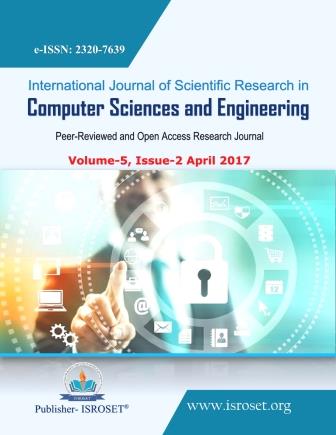Cryptosporidiosis: Challenges for Chemotherapy to AIDS Subpopulation
Keywords:
Cryptosporidium Parvum, Cryptosporidiosis, GMP, IMP, Immunocompromised, Immunocompetent, IMPDH, PVM, XMPAbstract
Cryptosporidium parasites, especially C.parvum and C.hominis are obligate intracellular apicomplexans protozoan parasite that infect epithelial cells of the small intestine posing life threatening Cryptosporidiosis disease to immunocompromised person and young malnourished children. It is also well known to be a troublesome waterborne pathogen. Pathogen transmission is naturally via contaminated drinking or recreational water supplies by the environmentally resistant and chlorine resistant oocysts. Cryptosporidium is classified in category B of bioweapons agents. However nitazoxanide, a nitrothiazole benzamide was approved by FDA Department for treatment of cryptosporidiosis in immunocompetent individuals and Paramomycin is used to treat C.parvum infections in animals. Cryptosporidium infections starts by ingestion of oocysts with contaminated water or food. Oocysts undergo excystation in gastrointestinal tract where four naked sporozoites are formed which then infect epithelial cell and initiate asexual development. IMPDH an NAD+ enzyme remains a promising drug target for anti-parasitic drugs. Cryptosporidium obtains guanine nucleotides via a streamlined pathway that requires IMPDH. Curiously, the gene encoding CpIMPDH seems to have been obtained from a bacteria through lateral gene transfer so that the parasite enzyme is very different from host ortholog. IMPDH is a homotetramer showing square planner symmetry. Inhibition of IMPDH is already used to treat viral infection and could be used to treat parasitic infection as well. IMPDH has been isolated from different sources and 26 crystal structure are deposited in PDB including mammals to apicomplexans and bacteria. There are several FDA approved inhibitors that target IMPDH.
References
Tzipori, Saul, H. Ward, “Cryptosporidiosis: biology, pathogenesis and disease”, Microbes and Infection, Vol.4, Issue.10, pp.1047-1058, 2002.
Kim, Youngchang, Magdalena M-Grzyska, S. K. Gorla, D.R. Gollapalli, G.D. Cuny, A. Joachimiak, L. Hedstrom, “Structure of Cryptosporidium IMP dehydrogenase bound to an inhibitor with in vivo antiparasitic activity”, Acta Crystallographica Section F: Structural Biology Communications, Vol.71, Issue.02, pp. 531-538, 2015.
Borad, Anoli, and H. Ward, “Human immune responses in cryptosporidiosis”, Future microbiology, Vol.5, Issue.3,pp. 507-519, 2010.
D.P. Casemore, C.A. Garder, C. OMahony, “Cryptosporidial infection, with special reference to nosocomial transmission of Cryptosporidium parvum: a review”, Folia Parasitol, Vol.41, Issue.1, pp.17-21, 1994.
Yang, Na, J. Wang, Z.W. Wang, Q.H. Wang, H.G. Yang, X.J. Wang, M.S. Cheng, “Computational Insights into the Inhibition of Inosine 5′‐Monophosphate Dehydrogenase by Mycophenolic Acid Analogs: Three‐Dimensional Quantitative Structure–Activity Relationship and Molecular Docking Studies”, Chemical biology & drug design, Vol.79, issue.6, pp.1063- 1071, 2012.
Sintchak, D. Michael, “Structure and mechanism of inosine monophosphate dehydrogenase in complex with the immunosuppressant mycophenolic acid”, Cell, Vol.85, Issue.6, pp. 921-930, 1996.
M. Pherson, S. Iain, S. Kirubakaran, S.K. Gorla, V.R. Tomas, J. A. DAquino, M. Zhang, G.D. Cuny, L. Hedstrom. “The structural basis of Cryptosporidiumspecific IMP dehydrogenase inhibitor selectivity”, Journal of the American Chemical Society, Vol.132, Issue.4, pp. 1230-1231, 2010.
Pankiewicz, W. Krzysztof, B.M. Goldstein, “Inosine monophosphate dehydrogenase and its inhibitors: an overview”, American Chemical Society: Washington, pp.1-17, 2003.
L. Hedstrom, “IMP Dehydrogenase: the Dynamics of Reaction Specificity”, Beilstein-institute: Experimental Standard Conditions of Enzyme Characterization, German, pp.19-31, 2013.
L.A.M. Fox, L.D. Saravolatz, “ Nitazoxanide: a new thiazolide antiparasitic agent”, Clinical Infectious Diseases, Vol.40, Issue.8, pp.1173-1180, 2005.
R.G. Nelson, A. Rosowsky, “Dicyclic and tricyclic diaminopyrimidine derivatives as potent inhibitors of Cryptosporidium parvum dihydrofolate reductase: structure-activity and structure-selectivity correlations”, Antimicrobial agents and chemotherapy, Vol.45, Issue.12, pp. 3293-3303, 2001.
R. Petrelli, P. Vita, I. Torquati, K. Felczak, D.J. Wilson, P. Franchetti, L. Cappellacci, “Novel inhibitors of inosine monophosphate dehydrogenase in patent literature of the last decade”, Recent patents on anti-cancer drug discovery, Vol.8, issue.2, pp.103-125, 2013
Fritzler, M. Jason , G. Zhu, “Novel anti-Cryptosporidium activity of known drugs identified by high-throughput screening against parasite fatty acyl-CoA binding protein (ACBP)”, Journal of antimicrobial chemotherapy, Vol.67, Issue.3, pp. 609-617, 2012.
Z. Graczyk, L. Chomicz, M. Kozłowska, Z. Kazimierczuk, T.K. Graczyk, “Novel and promising compounds to treat Cryptosporidium parvum infections”, Parasitology research, Vol.109, Issue.3, pp.591-594, 2011.
SK. Gorla, N.M. Nina, G. Yang, S. Gao, H. Ming, V.R. Jala, B. Haribabu, “Validation of IMP dehydrogenase inhibitors in a mouse model of cryptosporidiosis”, Antimicrobial agents and chemotherapy,Vol.58,Issue.3, pp. 1603-1614, 2014.
K. Mandapati, S.K. Gorla, A. Amanda, E.S. McKenney, M. Zhang, S.N. Rao, D.R. Gollapalli, “Repurposing Cryptosporidium inosine 5′-monophosphate dehydrogenase inhibitors as potential antibacterial agents”, ACS medicinal chemistry letters,Vol.5,issue.8, pp. 846-850, 2014.
S.K. Gorla, M. Kavitha, M. Zhang, J.E.W. Chin, X. Liu, B. Striepen, M.M. Grzyska, “Optimization of benzoxazole-based inhibitors of Cryptosporidium parvum inosine 5′-monophosphate dehydrogenase”, Journal of medicinal chemistry,Vol.56, Issue.10 , pp. 4028-4043, 2013.
W. Checkley, “A review of the global burden, novel diagnostics, therapeutics, and vaccine targets for Cryptosporidium”, The Lancet Infectious Diseases, Vol.15, Issue.1, pp.85-94, 2015.
Downloads
Published
How to Cite
Issue
Section
License

This work is licensed under a Creative Commons Attribution 4.0 International License.
Authors contributing to this journal agree to publish their articles under the Creative Commons Attribution 4.0 International License, allowing third parties to share their work (copy, distribute, transmit) and to adapt it, under the condition that the authors are given credit and that in the event of reuse or distribution, the terms of this license are made clear.







